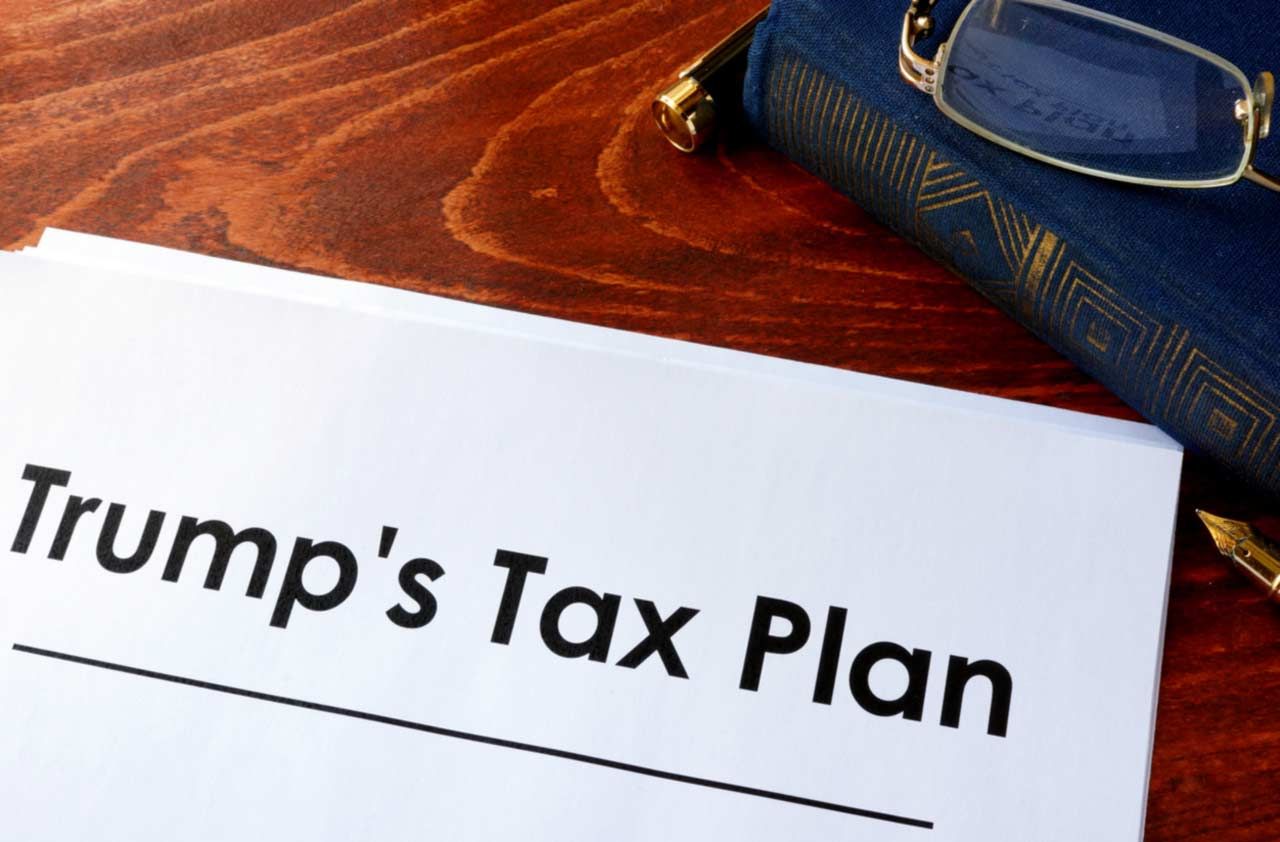The Trump Tax Plan: Where’s the Beef?
The lack of details in President Trump’s just-announced tax plan raises more questions than answers, but one thing's evident: The proposal shows the hallmarks of “trickle-down economics.”


On Wednesday, April 26, President Trump released his long-awaited tax proposal … well, sort of. The one-page outline provided by the White House should not be viewed as a plan, rather we should see it as a beginning of negotiations (after all Mr. Trump has a self-proclaimed love for negotiations).
Here is some of what we know so far:
- The plan would call for a reduction in tax brackets from the current seven to three: 10%, 25% and 30%.
- It would eliminate most line-item deductions — including those for state and local taxes, sales taxes, gambling losses and moving expense — with the noted exceptions of the mortgage interest deduction and charitable gift deduction.
- It would significantly raise the standard deduction, which Americans can use to reduce their taxable incomes.
- And on a corporate level, President Trump is following through on his campaign pledge to greatly reduce corporate taxes – from 35% down to 15% — as well as offering a “one-time” opportunity for corporations to repatriate offshore cash to the United States at a 10% tax rate.
What is glaringly missing from this outline are the revenue offsets, i.e. how we would pay for all of this. Unless the plan includes specific revenue-generating items, one has to assume that this “plan” is, in essence, one giant turbo-charged trickle-down economics plan (a long favorite economic theory among Republicans).

Sign up for Kiplinger’s Free E-Newsletters
Profit and prosper with the best of expert advice on investing, taxes, retirement, personal finance and more - straight to your e-mail.
Profit and prosper with the best of expert advice - straight to your e-mail.
On the personal income tax front, it is hard to argue with the need for a simpler more straightforward tax code (although I suspect the good folks at H&R Block (ticker: HRB) and Jackson Hewitt will protest loudly). Eliminating or significantly restructuring the convoluted line-item deduction mechanism and alternative minimum tax is more than needed. And in theory, the end result could be a “wash” for many as line-item deductions are eliminated in favor of a lower tax bracket. The devil will be in the details, and there aren’t any of these yet (on Thursday morning White House Budget Chief Mick Mulvaney said the vagueness of the proposal is intentional).
On the corporate side, the issues and shortsightedness are much clearer, and have a historical track record. In 2004 Congress, at the urging of then President George W. Bush, passed the repatriation tax holiday, which brought back some $312 billion into the United States. Predictably, very little of this money was utilized to create jobs, as investment or capital expenditure. Rather, it was used for share buybacks, increased and one-time dividends and generally for the benefit of shareholders.
President Trump’s proposal seems to follow a similar path and it offers flawed expectations that this time around corporations will act in the country’s best interest, as opposed to their own and their shareholders’.
Perhaps if President Trump attaches certain investment mandates or penalties for misappropriating the funds the plan could be very beneficial to our economy. But as it stands now, the premise of trickle-down economics is unlikely to have results that differ from previous engagements of this policy.
It’s impossible to give President Trump a “grade” on his tax proposal, as it isn’t much of a proposal at all yet. However, from a market and investor perspective, it is one more piece of “hope and good news” that could help keep this bull market alive and drive stocks materially higher.
Get Kiplinger Today newsletter — free
Profit and prosper with the best of Kiplinger's advice on investing, taxes, retirement, personal finance and much more. Delivered daily. Enter your email in the box and click Sign Me Up.

Oliver Pursche is the Chief Market Strategist for Bruderman Asset Management, an SEC-registered investment advisory firm with over $1 billion in assets under management and an additional $400 million under advisement through its affiliated broker dealer, Bruderman Brothers, LLC. Pursche is a recognized authority on global affairs and investment policy, as well as a regular contributor on CNBC, Bloomberg and Fox Business. Additionally, he is a monthly contributing columnist for Forbes and Kiplinger.com, a member of the Harvard Business Review Advisory Council and a monthly participant of the NY Federal Reserve Bank Business Leaders Survey, and the author of "Immigrants: The Economic Force at our Door."
-
 Why Does the Fed Prefer PCE Over CPI?
Why Does the Fed Prefer PCE Over CPI?Inflation has been top of mind for lots of folks in recent years. Most of Wall Street follows the CPI but the Fed favors the PCE. Here's why.
By Charles Lewis Sizemore, CFA Published
-
 Five Great Places to Live in Wyoming
Five Great Places to Live in WyomingWhether you prefer the buzzy affluence of Jackson Hole, rodeo towns or mountain towns, Wyoming should be on any nature lover’s list.
By Drew Limsky Published
-
 How to Age-Proof Your Retirement Plan
How to Age-Proof Your Retirement PlanLongevity risk is a big threat to your retirement, but there are several strategies to protect yourself from running out of money, no matter how long you live.
By Nico Pesci Published
-
 Retirement Planning for Couples With a Generation Gap
Retirement Planning for Couples With a Generation GapDo you and your partner have different retirement timelines and attitudes to saving? It is possible to make plans together. This is how one couple did it.
By Phil Wright, Certified Fund Specialist Published
-
 Q1 Post-Mortem: The Market Shifts You Don't Want to Ignore
Q1 Post-Mortem: The Market Shifts You Don't Want to IgnoreAs the second quarter gets underway, here are some takeaways from the market's first-quarter performance to consider as you make your investment decisions.
By Prem Patel, MBA, IAR Published
-
 How to Replace a Corporate Trustee (and Make Other Trust Changes)
How to Replace a Corporate Trustee (and Make Other Trust Changes)The right choice of trustee today may not be the right choice for trust beneficiaries in the future. Here's what you should know.
By Christopher F. Tate, J.D. Published
-
 How to Balance Your Insurance Expectations vs the Reality
How to Balance Your Insurance Expectations vs the RealityJust because you have an insurance policy doesn't mean that you're totally covered in the event something bad happens.
By Karl Susman, CPCU, LUTCF, CIC, CSFP, CFS, CPIA, AAI-M, PLCS Published
-
 How Building Liquidity Into Your Retirement Plan Can Pay Off
How Building Liquidity Into Your Retirement Plan Can Pay OffTo succeed in investing for retirement, you need time and discipline — liquidity can give you both.
By Samantha Compton, IAR Published
-
 Striking Oil in Opportunity Zones: Now Might Be the Best Time to Invest
Striking Oil in Opportunity Zones: Now Might Be the Best Time to InvestYou could unlock hidden wealth in QOZs with strategic oil and gas investments, potentially combining tax advantages with long-term growth in an essential industry.
By Daniel Goodwin Published
-
 What You Don't Know About Annuities Can Hurt You
What You Don't Know About Annuities Can Hurt YouLack of awareness leads many to overlook these potent financial tools, and with the possibility of running out of money in retirement, that could really hurt.
By Ken Nuss Published